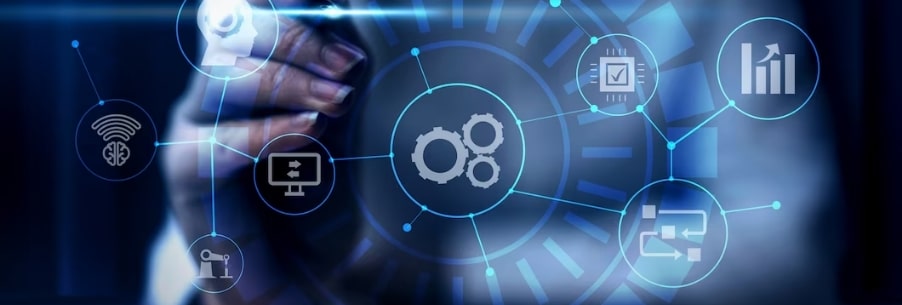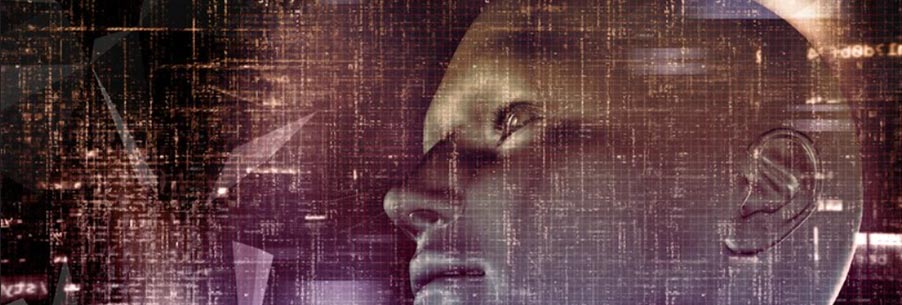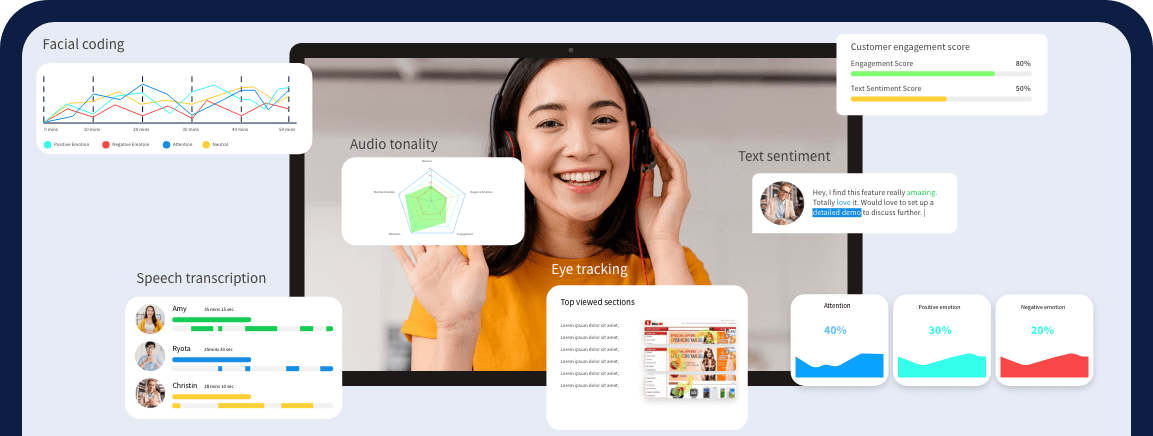Facial Action Coding System
Facial Action Coding System
Facial Action Coding System (FACS) is a technique that measures human emotions by analyzing facial expressions or movement of face. It relies on the assumption that certain facial expressions are universal and reflect basic emotions, such as happiness, surprise, anger, sadness, engagement, disinterest and more. Facial coding uses computer algorithms to detect and classify facial movements, called action units, that correspond to different emotions.

Facial Coding: Introduction
"Facial coding is a method of measuring and analyzing the micro-expressions and subtle movements of the face to understand and interpret human emotions and behavior. By capturing and decoding the unconscious and often fleeting signals that the face sends, we can gain a deeper understanding of what people are truly feeling and thinking, and how they respond to various stimuli in their environment." - Paul Ekman, psychologist and Pioneer in the field of facial coding and emotions.
Don’t make it complicated!
Think of Facial Coding AI as a digital translator where you can read facial cues and translate them into emotions like happiness, sadness, or surprise. It can do this by detecting small changes in your facial features, like the way your eyebrows move or your lips curve.

How FACS with AI Works?

Why Do You Need Facial Coding?
Facial coding helps researchers, marketers, and anyone looking to gain insights into how people are feeling to make decisions. It provides a quick and easy way to turn a person's facial expressions into quantifiable data, which you can use to gain a deeper understanding of their emotions.
For example, a retailer might want to know if a new store design will be well-received by shoppers. Now, by showing the designs to shoppers and recording their reactions, the retailer can use Facial Coding AI to quickly determine which designs are likely to be popular and which ones are likely to be met with negative reactions.
Facial Coding Has Practical Applications
One example is Mars, a confectionery and pet food company, that employs facial coding in market research. They utilize this technology to assess emotional reactions to their ads, such as the "Snickers" and "M&M's" campaigns and identify the most effective and resonant elements. By examining viewers' facial expressions, Mars can adjust its advertising strategies to increase engagement. Furthermore, Mars applies facial coding to evaluate product packaging designs and collect data on consumer preferences.
Facial Coding Generates Accurate Insights
According to the Greenbook studies, facial coding can identify all emotions with an accuracy rate of over 90%. This implies that facial coding can offer better insights than traditional research methods like surveys or interviews that rely on self-reporting, which may not fully capture people's emotions. By precisely detecting and analyzing facial expressions, facial coding can provide a more accurate understanding of people's emotions and attitudes towards products, services, or messaging objectively.

Compliances and ethics of facial coding

Future of facial coding
Top industries using facial coding
Marketing
Healthcare
Security
Sales
Market Research
Request a Live Demo!
See how Facial Coding can
help your business
Book your slot now!
Other technologies similar to facial coding
Latest from our Resources
Using Emotion AI to Spot and Smooth Out Digital Experience Pain Points
Using Emotion AI to Spot and Smooth Out Digital Experience Pain Points Imagine you own a high-end retail store. A customer walks in, looks at a product, scowls in confusion, sighs loudly, and walks out. You saw it happen. You know exactly why you lost the
Read MoreWhy E-Commerce Needs Data-Driven Customer Journey Maps
Why E-Commerce Needs Data-Driven Customer Journey Maps Walk into any E-commerce Director’s office, and you will likely see it: The
Read nowHow Facial Coding Helps Brands Test Audience Reactions to TV Promos and Long-Format Ads
How Facial Coding Helps Brands Test Audience Reactions to TV Promos and Long-Format Ads In the world of advertising, the stakes have never
Read nowFrequently Asked Questions
Facial expressions coding involves capturing and interpreting facial muscle movements known as action units (AUs). Each AU corresponds to specific emotions, providing a systematic way to decode facial expressions.
The Facial Action Coding Scheme (FACS) is a comprehensive system developed for precisely describing facial expressions. It assigns numerical codes to different facial movements, aiding in understanding emotional states across diverse contexts.
Facial expression analysis is a methodical examination of facial behaviors to decipher underlying emotions or reactions. It encompasses studying the intensity, duration, and sequence of facial movements to gain insights into emotional responses.
Emotion detection technology utilizes various techniques, including facial emotion recognition through computer vision algorithms, analyzing physiological signals like heart rate variability, voice modulation analysis, and sentiment analysis of text data, enabling a multidimensional.
Facial expression analysis involves scrutinizing facial movements to discern emotional cues. By analyzing the dynamics of facial expressions, researchers and practitioners can glean valuable information about individuals’ emotional states and responses to stimuli.
Although there are six primary facial expressions recognized universally—happiness, sadness, anger, surprise, fear, and disgust—there’s a spectrum of nuanced expressions reflecting complex emotional experiences. While these basic expressions serve as foundational categories, human emotions are multifaceted and diverse, leading to a myriad of facial expressions beyond the fundamental six.




